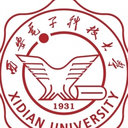Elevated serum ubiquitin carboxy-terminal hydrolase L1 is associated with abnormal blood-brain barrier function after traumatic brain injury.
Sleutelwoorden
Abstract
Serum S100B elevations accurately reflect blood-brain barrier (BBB) damage. Because S100B is also present in peripheral tissues, release of this protein may not be specific to central nervous system (CNS) injury. Ubiquitin C-terminal hydrolase 1 (UCHL1), and phosphorylated neurofilament heavy chain (pNF-H) are found exclusively in neurons, but their relationship to BBB dysfunction has not been determined. The objective of this study was to determine the accuracy of serum UCHL1 and pNF-H as measures of BBB integrity after traumatic brain injury (TBI), to and compare them to S100B. We performed a prospective study of 16 patients with moderate to severe TBI (Glasgow Coma Scale [GCS] score ≤12) and 6 patients with non-traumatic headache who had cerebrospinal fluid (CSF) collected by ventriculostomy or lumbar puncture (LP). Serum and CSF were collected at the time of LP for headache patients and at 12, 24, and 48 h after injury for TBI patients. BBB function was determined by calculating albumin quotients (Q(A)), where Q(A)=[albumin(CSF)]/[albumin(serum)]. S100B, UCHL1, and pNF-H were measured by enzyme-linked immunosorbent assay (ELISA). Pearson's correlation coefficient and area under the receiver operator characteristic (ROC) curve were used to determine relationships between serum markers and Q(A). At 12 hours after TBI, a significant relationship was found between Q(A) and serum UCHL1 concentrations (AUC=0.76; 95% CI 0.55,1.00), and between Q(A) and serum S100B concentrations (AUC=0.794; 95% CI 0.57,1.02). There was no significant relationship found between these markers and Q(A) at other time points, or between pNF-H and Q(A) at any time point. We conclude that serum concentrations of UCHL1 are associated with abnormal BBB status 12 h after moderate to severe TBI. This relationship is similar to that observed between serum S100B and Q(A,) despite the fact that S100B may be released from peripheral tissues after multi-trauma. We conclude that peripheral release of S100B after multi-trauma is probably negligible and that UCHL1 may have some utility to monitor BBB disruption following TBI.



